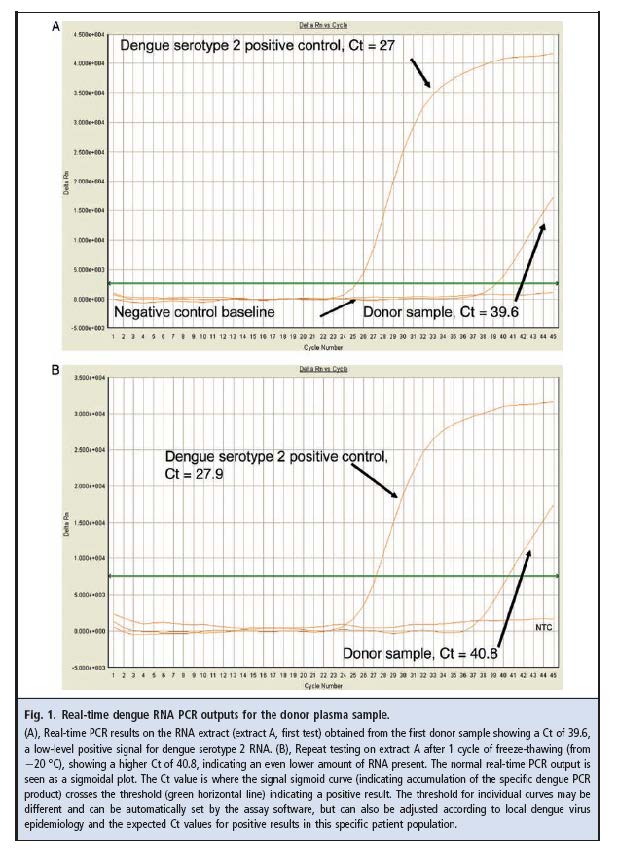Summary
DOI: 10.1373/clinchem.2009.131623
A 4-day-old neonate born prematurely at 29 weeks gestation developed thrombocytopenia (platelet count 43 × 109/L) with associated severe pulmonary and intracranial hemorrhaging. Urgent transfusions with 10 mL/kg of packed red cells and 10 mL/kg of platelet concentrate were given. These were sourced from blood donated 2 days earlier in Singapore by a 21-year-old female university student who was clinically well at the time. The day after these blood products were given to the neonate, the blood donor contacted the blood transfusion service to inform them that she was now sick with a febrile flu-like illness. Her blood donation screening plasma sample was retrieved and tested by PCR for several viruses, including dengue, chikungunya, enterovirus, and Epstein-Barr virus.
Student Discussion
Student Discussion Document (pdf)
Julian W. Tang,1 Yvonne Ng,2 Evelyn S. C. Koay,1 Gek Har Leow,1 Eng Soo Yap,3 Douglas Chan,1 Lip Kun Tan,3 and Paul A. Tambyah4
Departments of 1 Laboratory Medicine, 2 Neonatology, 3 Haematology and 4 Medicine, National University Hospital, Singapore.
*Address correspondence to this author at: Department of Laboratory Medicine, National University Hospital, 5 Lower Kent Ridge Road, Singapore 119074, Singapore. Fax _65-67771613; e-mail [email protected].
Case Description
A 4-day-old neonate born prematurely at 29 weeks gestation developed thrombocytopenia (platelet count 43 x 109/L) with associated severe pulmonary and intracranial hemorrhaging. Urgent transfusions with 10 mL/kg of packed red cells and 10 mL/kg of platelet concentrate were given. These were sourced from blood donated 2 days earlier in Singapore by a 21-year old female university student who was clinically well at the time. The day after these blood products were given to the neonate, the blood donor contacted the blood transfusion service to inform them that she was now sick with a febrile flu-like illness. Her blood donation screening plasma sample was retrieved and tested by PCR for several viruses, including dengue, chikungunya, enterovirus, and Epstein-Barr virus.
Dengue RNA (serotype 2) was found to be present at a very low amount (i.e., at a realtime PCR cycle Ct number of 39–40) (Fig. 1A) from the initial RNA extract (extract A). To confirm the presence of this low amount of dengue 2 RNA, the same extract (extract A, which had been stored at -20 °C) was retested (Fig. 1B), and again found to give a low-positive result.

Questions to Consider
- What steps should be taken next?
- What can cause false-negative and false-positive PCR results?
- How should low-positive PCR results affect patient management?
Final Publication and Comments
The final published version with discussion and comments from the experts appears
in the March 2010 issue of Clinical Chemistry, approximately 3-4 weeks after the Student Discussion is posted.
Educational Centers
If you are associated with an educational center and would like to receive the cases and
questions 3-4 weeks in advance of publication, please email [email protected].
AACC is pleased to allow free reproduction and distribution of this Clinical Case
Study for personal or classroom discussion use. When photocopying, please make sure
the DOI and copyright notice appear on each copy.
DOI: 10.1373/clinchem.2009.131623
Copyright © 2010 American Association for Clinical Chemistry